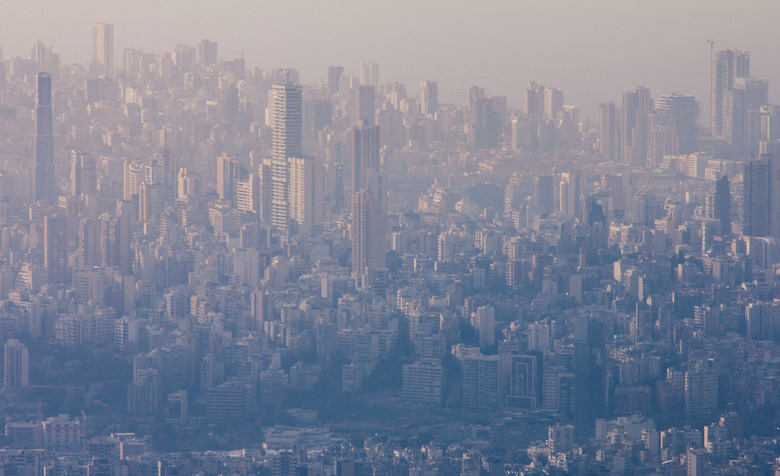Gases That Cause Air Pollution
Earth's atmosphere consists of a dynamic system of natural gases necessary to sustain life. While the planet has defense mechanisms to absorb small quantities of air pollutants, high levels of gases can cause ozone depletion in the atmosphere and other problems for living organisms. The main sources of gaseous air pollutants include fuel combustion in factories and in coal-burning power plants, as well as emissions from automobiles. While these gases are not the only ones contributing to air pollution, they represent the dominant sources of this world-wide problem.
TL;DR (Too Long; Didn't Read)
Gases that lead to air pollution include carbon, nitrogen and sulfur oxides. While some of these gases occur naturally, like carbon dioxide in the expulsion of air from the lungs, the serious polluters come from the burning of fossil fuels: coal, oil and natural gas.
Carbon Oxides
Carbon
Oxides
Carbon oxides are among the most well-known greenhouse gases contributing to the air pollution plaguing the Earth's atmosphere. Carbon monoxide is a poisonous gas — highly dangerous due to its lack of odor and color — released into the atmosphere with the incomplete combustion of fuels, such as coal, wood or other natural sources, as well as exhaust from automobiles.
Carbon dioxide is the greenhouse gas most scientists consider the main air pollutant of the Earth's atmosphere. Even though carbon dioxide is essential to support living organisms, it is also a dangerous air pollutant, generated mostly by human activities such as deforestation and the fossil fuel combustion. Responsible for more than half of the world's global warming trends, carbon dioxide creates an invisible layer that keeps the sun's infrared rays trapped in the atmospheric bubble around the Earth.
Nitrogen Oxides
Nitrogen
Oxides
Nitrogen oxides are air pollutants that contribute contaminants to the Earth's atmospheric. Like carbon oxides, vehicle emissions are a major source of nitrogen oxides. These air pollutants are easily recognizable by the brown plume or haze that forms over areas with high concentrations of these gases. Nitrogen dioxide is one of the most prominent and dangerous air pollutants, and this toxic gas is easily identifiable by its reddish-brown color and distinctive, sharp odor.
Sulfur Oxides
Sulfur
Oxides
Sulfur oxides include another group of gases that pollute the Earth's atmosphere. Of grave concern is sulfur dioxide, one of the major components of smog — and a primary cause of acid rain. While sulfur dioxide occurs naturally when volcanoes erupt, the combustion of sulfur-containing fuels such as petroleum oils and coal results in a dangerous air pollutant eating away at the Earth's fragile atmosphere. Dangerous to both plants and animals, sulfur oxides can injure organic matter in high concentrations and can cause respiratory problems by irritating air passages and lungs.
Cite This Article
MLA
Sherrard, Melissa. "Gases That Cause Air Pollution" sciencing.com, https://www.sciencing.com/gases-cause-air-pollution-7445467/. 30 April 2018.
APA
Sherrard, Melissa. (2018, April 30). Gases That Cause Air Pollution. sciencing.com. Retrieved from https://www.sciencing.com/gases-cause-air-pollution-7445467/
Chicago
Sherrard, Melissa. Gases That Cause Air Pollution last modified March 24, 2022. https://www.sciencing.com/gases-cause-air-pollution-7445467/
